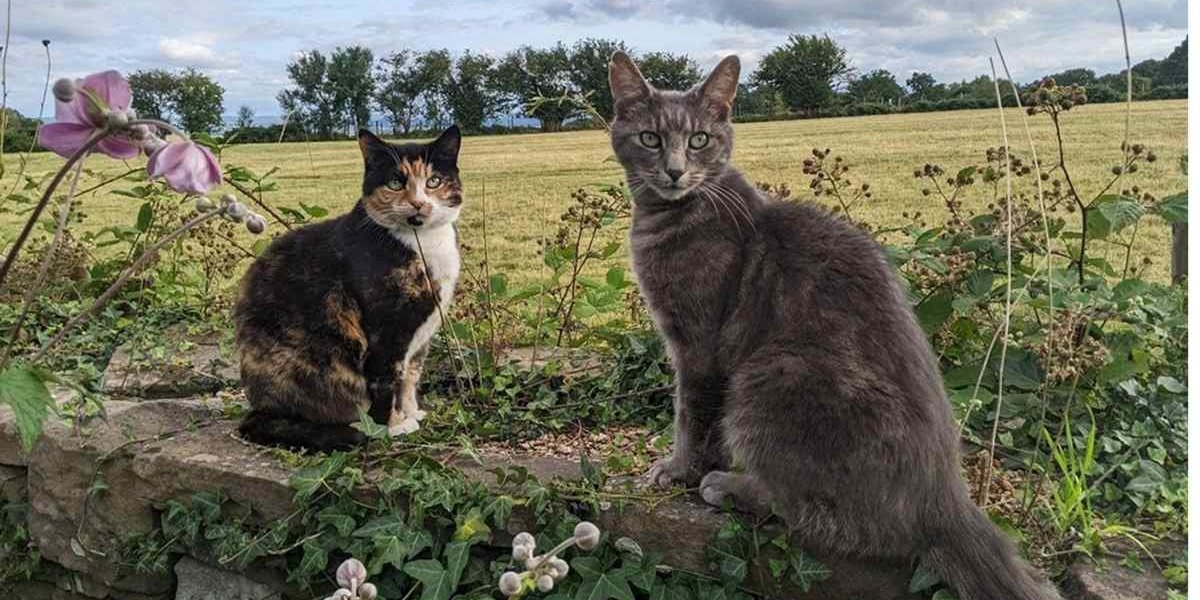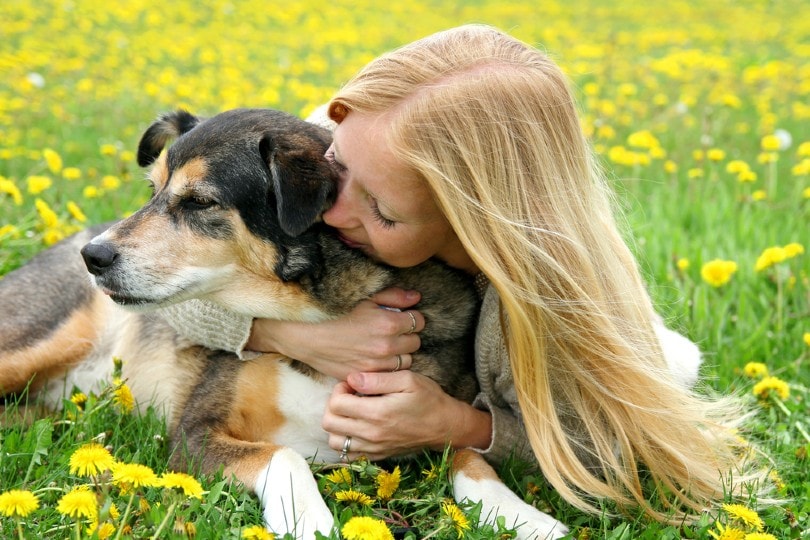
Lizzie Youens / Cats.com
As a feline-loving veterinarian, I adore all my kitty patients. And my absolute favorites are those in their golden years. Age is just a number, as the saying goes, and senior cats have so much love and companionship to offer.
When does a cat become senior? According to the American Animal Hospital Association and American Association of Feline Practitioners, a cat enters the senior stage at age 10. The International Society of Feline Medicine classifies cats ages 7–10 years as mature and over 11 as senior. When my feline patients reach 7–8 years old, I start discussing nutrition, home adaptations, veterinary care, and suitable routines with the pet parents of these more mature kitties.
Let’s walk through some simple yet effective ways that we can help maintain their comfort and health.
1. Diet and Nutrition
My cat Pi is now 10 years old and on a new wet food diet. Lizzie Youens / Cats.com
Nutritional requirements don’t change all that much, but senior cats may need adjustments to address health concerns. The best senior cat foods are made with high-quality protein that is easily digestible and extra tasty. Geriatric cats can’t absorb complex nutrients as easily as they used to and will lose muscle mass as they age. I recommend a calorie-dense, highly palatable food for older cats who find it difficult to maintain a healthy weight.
You should also monitor water intake as part of senior cat care. Chronic kidney disease is very common, and maintaining hydration is especially crucial for these cats. Consider choosing wet food rather than dry, provide plenty of accessible water bowls, and think about purchasing a water fountain.
When my cat Pi was younger, she was on a dry kibble diet to help address her weight gain. However, her most recent senior bloodwork showed a small rise in her kidney enzymes, so I switched her to a wet diet to optimize her hydration and support her kidney function.
2. Regular Vet Visits
Just like humans, older cats are more prone to certain health issues. Being alert to any early signs of illness is vital to accessing prompt diagnosis and treatment. Common diseases for seniors include:
This may seem like a long and scary list, but with knowledge comes power. Regular vet checks will help spot problems early and are a great time to discuss your cat’s changing needs, such as diet or environment. As your cat gets older, your veterinarian may advise more regular visits, including blood pressure, bloodwork, and urine examinations.
When I see senior cats in the clinic, I always advise owners to watch out for these common signs of problems:
Weight loss or weight gain: Changes to your cat’s usual weight or body shape can happen in older cats, but can be an early sign of disease such as dental problems or diabetes.
Changes to appetite or thirst: Excessive thirst is associated with hyperthyroidism, kidney disease, and diabetes, and appetite changes can also occur.
Mobility issues: stiffness, being unable to jump up onto their favorite perches, and changes to activity can all indicate pain, such as with osteoarthritis.
Behavioral changes: Changes to a cat’s behavior can occur with physical disease, stress, and other problems such as feline dementia.
Toileting issues: Urinating more often or in strange places, diarrhea, or constipation can be early signs of health problems.
If you have concerns about your older pet, ask your veterinarian for advice.
3. Pain and Comfort
Chronic pain can be difficult to spot in cats, as they are excellent at masking signs of pain. Older cats are more prone to certain painful health issues, such as arthritis and dental disease, so it’s important to be watchful.
Cats in pain can present with a variety of signs, including behavioral as well as physical. Arthritic cats may not show obvious limping and instead show more subtle changes such as not jumping up onto their favorite sleeping place, or toileting outside the litterbox (especially if it’s high-sided). Those with sore teeth may show changes to their appetite or become messy and fussy when eating. Sudden changes to behavior, such as aggression when petted or groomed, can be rooted in pain.
If you think your cat may be in discomfort, always seek veterinary advice. There are a variety of medications and supplements that may be suitable to reduce pain and increase comfort. Chronic pain greatly affects quality of life, so we need to listen to what our cat’s behavior tells us.
Remember the smaller comforts too. Older cats may need assistance with grooming (including claws). Regular sessions can be an excellent bonding experience as well as an opportunity to check them over for lumps and bumps. The earlier you start with these habits, the better, so invest in a good brush or two and start with short, positive sessions.
4. Home Environment
Older cats need plenty of warm, comfortable resting spaces. Lizzie Youens / Cats.com
Consider your older cat’s surroundings and whether any adaptations can be made for their ease. Your cat’s home environment is very important to them, and there are some simple ways to make a big difference to their comfort.
Your senior cat may now need pet stairs or ramps to get onto the furniture. If you have a multi-story house, they may stop climbing the stairs when they’re sore. This can affect their territory and lead to stress. If adjustments aren’t possible, make sure all their resources are in easily accessible rooms.
Does their bedding have extra padding for warmth and to support sore joints? Older cats sleep more than younger adults, and tend to have less muscle mass protecting bony joints. Provide plenty of warm, draft-free resting places.
Are the litter box and food dishes accessible for their mobility issues? Some older cats struggle to climb into high-sided litter trays, which can lead to inappropriate toileting behavior. If your cat is fed up on a raised surface, ensure they can still access it comfortably.
5. Mental Stimulation
Older cats may find physical activities—such as running, chasing, and playing with toys—more difficult as they age. This is especially true for our arthritic cats. However, it’s important that they still have access to some form of stimulation and interaction in their everyday lives.
Don’t write off movement completely for an aging cat. It’s beneficial to their muscle mass and joints to still be physically active at any level they can comfortably manage. Gentle play, such as “find-the-treat” scent games, easy obstacle courses, and puzzle feeders/toys are suitable for all ages without requiring any athletic prowess.
You can consider other forms of social interaction, such as grooming sessions and sofa snuggles. Some cats become more affectionate and clingy as they get older, wanting more cuddle time as they snooze. Others prefer their own physical space but often like some company or just to know you’re there.






